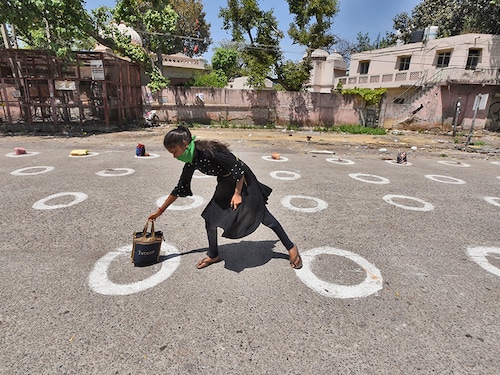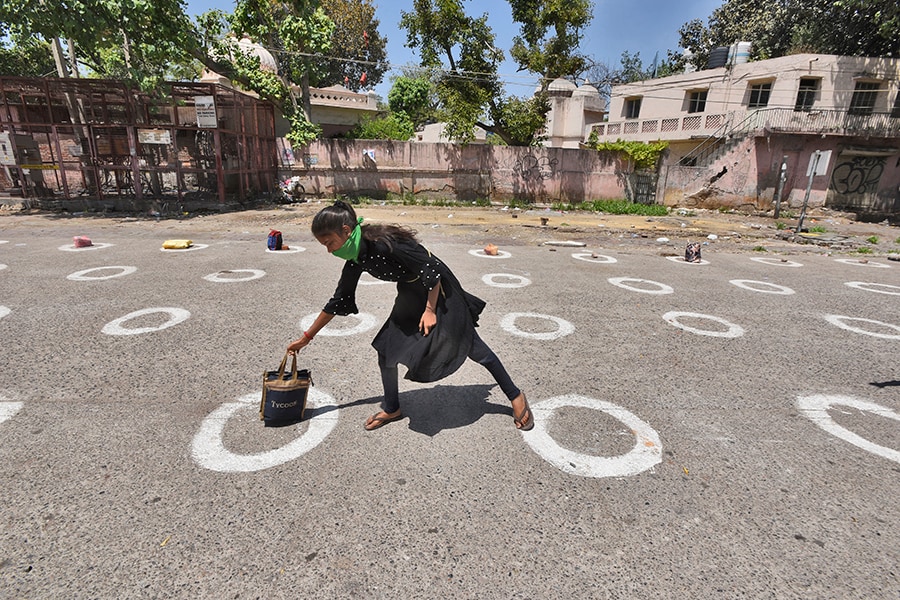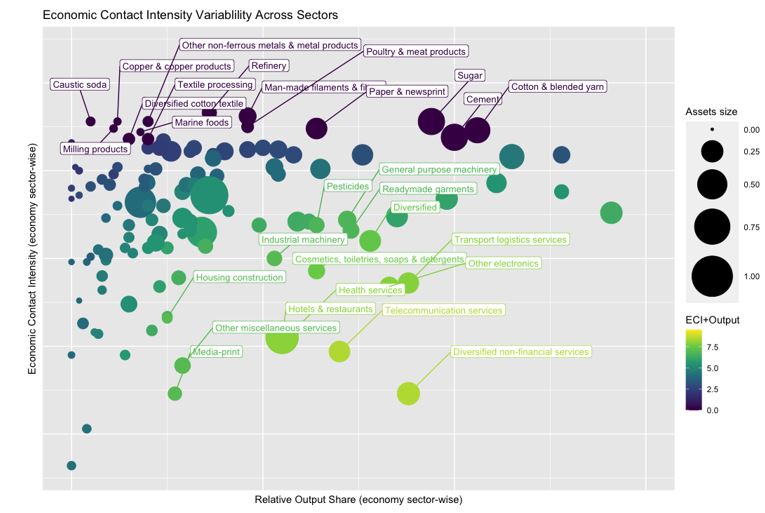Towards solving the lockdown conundrum through economics
The economic costs for industrial sectors and geographical locations that are on the higher end of contact-intensity are likely to be relatively greater in the event of a lockdown


 Image: Burhaan Kinu/Hindustan Times via Getty Images
Image: Burhaan Kinu/Hindustan Times via Getty Images
In a remarkable feat, India has been rather successfully observing an almost 100% lockdown over more than two weeks now, and there is an increasing speculation that the current lockdown may get extended further. While such a lockdown - and extensions of it - are imperative to arrest the spread of virus, but given the heterogeneous nature of Indian economy, the economic costs of a blanket lockdown can pile up sooner than we think, and be more acute than we can imagine. And this begets the question: is 100% lockdown too excessive for India?
To address this, the key premise I draw upon is the following: At the heart of both virus transmission and economic activity is the human-to-human “transaction” (or, in other words, an interaction which serves an economic purpose). Intuitively, the broad array of economic activities differs widely in terms of the frequency with which one has to “transact” with other economic agents. Figure 1: Economic Contact Intensity (ECI) dispersion across geography (district-wise).
Figure 1: Economic Contact Intensity (ECI) dispersion across geography (district-wise).
Source: Author’s calculations. Notes: Both Panels are the district level and the color coding emphasizes the degree of economic contact intensity. Panel A plots the raw ECI Index for the districts where the district colors which lean towards an increasing red, imply a greater economic contact intensity. Ceteris paribus, a district with a higher ECI, should perhaps stay in the lockdown for a higher period relative to a district with a lower ECI. Panel B plots the weighted ECI where weights are the respective aggregate district level output (sales) share. While Panel A plots the raw ECI, Panel B tries to juxtapose this raw ECI with the district-level output share. A greener district is an indication of lower contact-intensity and higher economic output share. Therefore, ceteris paribus, for the green areas that the lockdown could be made relatively lenient.
[1] Assistant Professor, Economics at IIM Calcutta. Contact: vipul@iimcal.ac.in. This an abridged summary of my research paper “Economic Contact Intensity Index for India” (April 9th) which can be accessed here.
Figure 2: Economic Contact Intensity (ECI) across economic sectors.
Source: Author’s calculations. Notes: This figure plots the sector wise dispersion of the economic contact intensity and opens up another dimension to conducting the lockdown policy. The size of the bubble stands for the asset size: bigger the bubble, greater is the sector size. The color of the bubble stands for a geometric average of the sales (output) and the inverse of the economic contact intensity, averaged at the sector level and thereby, highlighting the economic size impact of the sectors. The lighter color bubbles (sectors) have, in general, a combination of lower ECI and higher output share and the darker color bubbles (sectors) have a combination of higher ECI and in general lower output. Ceteris paribus, the lockdown could potentially be made relatively lenient for the lighter colored sectors.
I produce the main results in the figures and describe the key insights in the notes accompanying the figures.
Figure 1 documents the variation of contact intensity across the districts of India. Exploiting this geographical variation is the first strategy which can be readily incorporated in the lockdown policy, where regions with low contact intensity could be effectuated with a milder lockdown policy.
Figure 2 plots the sector wise dispersion of the economic contact intensity and opens up another dimension to conducting the lockdown policy. in general, economic sectors with a combination of lower economic contact intensity and higher output share are more suited for a lenient lockdown than the sectors with higher contact intensity and lower output share. This could potentially play a part in unwinding the lockdown policy.
Also, ceteris paribus, the economic costs for industrial sectors and geographical locations which are on the higher end of contact-intensity are likely to be relatively greater in the event of a lockdown. Therefore, such an identification of the low and high contact-intensity sectors (or districts) could be a useful device for policy makers, if, for instance, fiscal transfers (taxes or subsidies) are instituted in future, to partially mitigate the asymmetric cost implications of a blanket lockdown.
Overall, the results suggest substantial variation across industrial sectors and the districts, and therefore highlighting an important first-order role for economic contact-intensity to be useful in rationalizing the lockdown policy. Incorporating this dimension in policy making could help navigate the dual challenge: keeping the transmission rate of the virus low without necessarily impeding the economic outcome in excess.
Vipul Mathur is assistant professor, economics group, IIM Calcutta.
This piece first appeared on Moneycontrol.com
First Published: Apr 13, 2020, 12:12
Subscribe Now